- News
- Reviews
- Bikes
- Components
- Bar tape & grips
- Bottom brackets
- Brake & gear cables
- Brake & STI levers
- Brake pads & spares
- Brakes
- Cassettes & freewheels
- Chains
- Chainsets & chainrings
- Derailleurs - front
- Derailleurs - rear
- Forks
- Gear levers & shifters
- Groupsets
- Handlebars & extensions
- Headsets
- Hubs
- Inner tubes
- Pedals
- Quick releases & skewers
- Saddles
- Seatposts
- Stems
- Wheels
- Tyres
- Tubeless valves
- Accessories
- Accessories - misc
- Computer mounts
- Bags
- Bar ends
- Bike bags & cases
- Bottle cages
- Bottles
- Cameras
- Car racks
- Child seats
- Computers
- Glasses
- GPS units
- Helmets
- Lights - front
- Lights - rear
- Lights - sets
- Locks
- Mirrors
- Mudguards
- Racks
- Pumps & CO2 inflators
- Puncture kits
- Reflectives
- Smart watches
- Stands and racks
- Trailers
- Clothing
- Health, fitness and nutrition
- Tools and workshop
- Miscellaneous
- Buyers Guides
- Features
- Forum
- Recommends
- Podcast
TECH NEWS
First ride review: Campagnolo Ekar 1x13 Gravel Groupset
The new Campagnolo Ekar groupset is a gravel drivetrain that claims to be the world's lightest gravel groupset. Key features include a single chainring design with a 13-speed cassette that has some interesting features plus new thumb shifter that Campagnolo calls “Lever 3”. The groupset offers features and in particular a range in the cassette that neither Shimano nor SRAM can currently offer.
Campagnolo has tried off-road groupsets before, but not since the late '80s and early '90s with Mountain Bike groupsets including the Euclid and Record OR, which certainly had its plaudits. Step forward almost 30 years and we have the Ekar, named after a mountain with a gravel road that leads to Italy's largest observatory.
One claim for the Ekar groupset it is being the lightest gravel-specific groupset in the World, at 2385g versus SRAM Force 1x11, claimed as the next lightest at 2471g and Shimano GRX 800 which they claim is 2728g complete. We can't verify the weight of the individual parts, but the 3T Exploro test bike fitted with 9-42 cassette and 38 tooth chainset comes in at a decent 8.6kg ready to ride, which certainly points to some lightweight components.
Campagnolo also claims that weight was not a primary concern and that durability, serviceability, braking control that are the main focus points. They have also looked at the ability for one system to cater for different styles of gravel riding, which they class into Endurance, Gravel Race and Gravel Adventure with options of 4 different chainring sizes and 3 different cassettes that cover all areas. It certainly is the case that what one person considers 'gravel' could be very different to another and that is just within the UK. Compare our typical riding with US gravel or even Italy and it is clear there are big divides within the category.
The Shifter
Anyone familiar with Campagnolo shifters will instantly feel at home with the new Ekar Ergopower shifter. The shape really feels like it sculpts around your hand when using on the hoods and compared to Shimano GRX, Force 1 or Force AXS it feels narrower and more rounded. It doesn't quite have as dramatic an angled top section as the Campagnolo road levers, but it's still easy to distinguish it a Campagnolo product.
The big change versus any other Campagnolo shifter is what they call the “Lever 3”. This new style thumb shifter is uniquely shaped, taking almost a J shape design. Personally, as a rider who finds the Campagnolo road groupset thumb shift design difficult to live with and hard to reach, especially on the drops the new design is a huge improvement. No matter which position your hand is in, the shifter button is easy to find, but the biggest improvement is when in the drops. It is extremely easy to reach and without having to move your hand position at all which means being able to maintain the grip throughout. When barrelling down rougher off-road trails but still looking to accelerate and pedal it is great and one of the best features of the whole new groupset.
The upshifts are more in keeping with other Campagnolo and competitor groupsets, a lever behind the brake that has the ability to shift up to 3 cogs in one swing. To achieve that takes a really big arc action and personally not something I found I have done often so far, other than simply testing it out. For the lower range of the cassette, where gaps are smaller the multiple shifts are easy and smooth enough but as the gaps get larger it does get a little rougher, which isn't helped as cadence is likely to be lower as these shifts will most likely be when going uphill. For a single shift, the lever travel needed feels shorter than the equivalent on Shimano GRX and is smooth.
The one slight downside of the position of the Lever 3 switch for anyone coming from SRAM/Shimano is there will be a small section of the hoods where that lever sits that you are not able to hold, although personally by the end of just the first ride I had adapted and there was no problem. The more sculpted shape of the lever helped here too and overall provides a very comfortable hold. The type of rubber used for the hoods also seems good for the intended use, having plenty of grip although as of yet, no wet rides to be able to test and see how it copes with water and rain.
13 cogs
Campagnolo might not be the very first to offer a 13-speed groupset (Rotor first did so back in 2018 - https://road.cc/content/tech-news/244867-video-first-look-rotor-1x13-all...) but that still hasn't become a mainstream offering. Campagnolo is known for being the first to increase the number of cassette cogs on offer, although this has always been with road drivetrains so it is somewhat bold to see the first off-road designed groupset they have produced in decades go above the others.
Does it work? I think so. Key to what makes it a success is not just the amount of cogs, but the style and gaps between them. There are 3 different sizes available, 9-36, 10-44 and the one being tested, 9-42. The cassette feels like it is split into 2 and not just because it is a 2-piece design. It is the design, which has single tooth increases in the smallest 6, from 9t to 16t then the second half it gradually increases the changes as it goes up. From 16-18-21-25-30-36-42. Each of these increasing by an extra 1 tooth on each change, with exception of the final shift which stays at a 6t difference.
The range on offer with the 9-42t is 466%, which is considerably more than a Shimano GRX 11-42 at 381% or 11-46 at 418%. It falls short of a SRAM AXS mullet 10-50t, which is 500% although that has very different spacing on offer to the Ekar.
Although only limited time has been available to test so far, what I found was the bottom half really feels great on faster trails and also road sections. If you are the kind of rider who mixes road with gravel, either as a way to get to tracks and off-road sections or just mix things up during the ride the spacing should suit. As the climbs start the jump in the gears feels fine too and so far I have not found there to be a jump that felt too big.
There will no doubt be people who say the 9 tooth is less efficient and while I can't test it, the amount of time spent in it seems absolutely minimal. It may just be because of the combination fitted, but I only used it on faster downhills and was not spinning out at all, even over 60kph. Even if it could be proved efficiency was affected, as a gravel groupset it won't be the most important factor. Given the options available Campagnolo surely has one eye on the 1x road market too given the option to have a 9-36 with 44 tooth cassette, which would be far too big for almost all off-road applications.
2D Parallelogram
To aid the rear derailleur and allow the initial small gaps that lead to the larger steps, a feature that Campagnolo call 2D Parallelogram is used. This allows the jockey wheels to follow the curve of the cassette, rather than a simple straight line, keeping the pulley wheels closer to the cogs throughout the range. It is also adjustable, depending on which cassette is used, although not something that I have needed to try yet.
Another feature on the rear includes the use of a clutch, which is a must-have feature for any 1x drivetrain. This helps ensure the chainstays on the chainrings throughout the range. From initial testing, the clutch seems to be very strong and despite the big range in the cassette, even on bumpier ground and in the smallest cogs I have not had the chain come off and also, no noticeable chain slap onto the chainstay. There is also a clutch catcher that allows it to be held open and make wheel changes easier. It was initially fiddly to find and use, but after some practice is proving to be quite straight forward, although perhaps not as simple as the SRAM setup for example.
One thing that stands out when looking at the drivetrain is the large cable loop to the rear. This is no doubt to ensure smoother shifts, but compared to Shimano GRX, with its neat cable it does stand out. If the longer cable means better long term reliability then it might be something that riders are willing to live with.
Shift quality
Campagnolo users on the road groupsets will say the shifts are “positive” and others may say “clunky”. Ekar seems to be more of the former than the latter. Downshifts have a very definite click, which is not hard at all to activate. It feels like the spring is stronger than a Shimano GRX for example with downshifts being rapid throughout the range of the cassette. Upshifts are a little different and can be a little rougher and noisy at times. This may just be due to setup, but may also be part of the cassette design but something I hope to explore further in testing.
Look closely at the teeth and certain cogs have dramatically shaped teeth, some almost looking as if they are missing or have been cut off. These are no doubt put to improve shifting, although the most drastic shapes are in the lower and middle of the cassette, where the gaps are not so dramatic which is interesting to see. One thing that is impossible to ignore is that the shifting is at times noisier than the competition, both the actual click of the shifter but then the movement in the derailleur chain and cassette. When riding however the drivetrain is incredibly quiet and smooth, so this noise is purely when shifting.
The cassette body is based on the Campagnolo N3W freehub design, which is essentially the same as a standard Campagnolo cassette body, except it is 4.4mm shorter. Campagnolo is, however, making an adapter to then be able to use the same set of wheels with another Campagnolo road groupset. The freehub tool to remove the cassette should be identical to other Campagnolo road groupsets, although at least on the test bike Fulcrum wheels the space from axle to lockring is very small, so it may be that only certain tools fit.
Braking power
Campagnolo was late to the disc brake party, but most people would be in agreement that the function is as good as any other brand and Ekar is not different. The feel on offer is fantastic, being easy to modulate and control but the power is there when you need it. The test bike came fitted as “euro” style, which can take a few rides to fully be used to but the progressive feel of the power really made this a non-issue and only highlighted the modulation. Another big plus is the shape of the brake lever with a curved flick towards the end, which holds the hand in place comfortably when braking. The power was plentiful and one finger braking all that was needed, even when more power was needed to slow or stop.
The levers have reach adjustment, which gives about 5mm of adjustment and while that isn't massive the curved shape of the lever I think will have a bigger impact and should mean they will suit all riders. For people who are happy to maintain their own bike, the positioning of the bleed ports at the top of the Ergopower levers and outside on the callipers should make bleeding straight forward.
The brake callipers are designed to fit flat-mount mounts and they are compatible with 140mm or 160mm, as fitted to the test bike. There do not appear to be any dramatic differences versus the road disc groupsets, but that is no bad thing.
All about Q-factor
The Ekar chainset is a chunky looking carbon fibre design, looking similar to the road chainset offerings with a 2-piece design and is claimed to be just 615g complete with chainring (175mm arms, 38t). Another key figure is the Q-factor, which is the distance between the pedals at 145.5mm.
This might not be a figure many riders will have had to consider before as on the road it doesn't really change. Mountain bikes have wider q-factor as they need to accommodation wider tyre clearances.
Is a narrower Q-factor better? It won't matter for some riders, but for other and including myself I notice the difference and prefer a narrower Q-factor, which may be linked to hip width or rider height or perhaps just personal preference. Pedal axle widths also have an effect and some are longer than others.
Compare the 145.5mm Q-factor on the Ekar to a typical Shimano road chainset at 146mm or to Shimano GRX which is 2.5mm wider each side, totalling 151mm. The wider Q-factor of GRX means extra clearance, which can be a factor on certain bikes and especially for larger chainrings. This is one area where the use of the 9 tooth cassette means a bigger chainring is not needed for Ekar. To get the same largest gear that our 38/9 test bike has you would need a 46 tooth chainring when combined with an 11 tooth cassette, which is considerably larger. There are some bikes however designed specifically for a wider q-factor, or even an MTB chainset so Ekar won't be suitable here.
As standard Ekar has 4 chainring sizes available, all using the narrow/wide profile with sizing from 38T to 44T. Combine that 44 tooth chainring with a 9 tooth cassette sprocket and you have a combination that has a largest gear bigger than 53/11 road race option, which shows there is more to this groupset than purely gravel. The chainset is available in 4 lengths: 165mm, 170mm, 172.5mm and 175mm which will cover all popular options.
After initial rides on the test bike, which has the 38 / 9-42 gear offering but also knowing what other combinations are available, I wonder if there is too much focus on the larger gears and not enough at the opposite end, particularly bikepacking or really adventurous rides with steep climbs. For the test rides the range was absolutely, but add a load more weight and keep some steep climbs in and I bet even with a 38/44 lowest gearing option there will be many who will want something smaller.
Whether a smaller chainring or larger cassette will become available, or if 3rd party offerings may fit is something to look and test and it could well be the biggest chink in the Ekar armour.
C13 chain and Protech BB
Campagnolo claims the C13 chain is designed specifically for Ekar and is the narrowest chain that Campagnolo have designed. It claims to be strong and durable, which for off-road use will be absolutely vital. It is early days in testing but for now at least I have no initial worries. What is evident is the drivetrain is very quiet in use, even when dirty and at the extremes of the range.
Another new feature for Ekar is the ProTech bottom bracket, which is claimed to protect against water and dirt ingress. Fitting options are available for all major press-fit and threaded bottom bracket shells. It is too early to tell if this will live up to its claims, but with Autumn approaching and all of Wales to use as its test ground I will be testing this out for certain.
Worth it?
Pricing has been given on individual parts, which adds up to £1447 excluding shift cable. This makes it more expensive than Shimano mechanic 600 GRX, but cheaper than the di2 800 series, although that is based purely on RRP. For SRAM is it a similar story, being more expensive than a Force 1 mechanical and cheaper than either a Force AXS wide or mullet style X01/Force combination.
Verdict
Although only a few rides in, initial impressions for Ekar are positive and it does seem to deliver something that other groupsets don't currently offer, particularly the gear range. Campagnolo fans looking for a gravel groupset will surely love it, but it may also win over other fans.
Matt is an endurance nut who loves big rides and big events. He's a former full-time racer and 24hr event specialist, but now is also happy riding on or off-road and loves long adventures and audax events.
Latest Comments
- mark1a 5 sec ago
Have you read any reviews of the Elemnt Ace?
- Vo2Maxi 30 min 7 sec ago
Armstrong has never told the FULL truth.
- Bigtwin 40 min 25 sec ago
Is the relvant authorites are so inept they can't even efficiently tax someone who sole relevant skill is that they drive a car quickly in a circle...
- Bigtwin 46 min ago
Turns out that the ways the Grand Fromage upstairs moves in aren't that strange after all.
- Bigtwin 48 min 21 sec ago
Clarkson. Fat moron's icon talking tocix ill-informed bollix shocker. If ever there was someone who should just be put out to grass with the rest...
- Garethhall74 1 hour 23 min ago
It will be interesting what new features or functions the new Booky and Roam V3's have, plus if any new functions get added to the element app....
- Rendel Harris 1 hour 56 min ago
I know they're the dregs but that really would be scraping the bottom of the barrel.
- Dnnnnnn 2 hours 37 min ago
+1 for the physio. I'd knee problems a few years back - except the problem wasn't really my knees, it was muscles above and below. I doubt I'd have...
- Oldfatgit 3 hours 53 sec ago
It's still 'better' than the 6 points and small fine the guy that broke my back [and ulna, and knee, and 11 ribs] got.
- quiff 3 hours 38 min ago
Have a look here - https://road.cc/content/forum/bike-respray-312357


























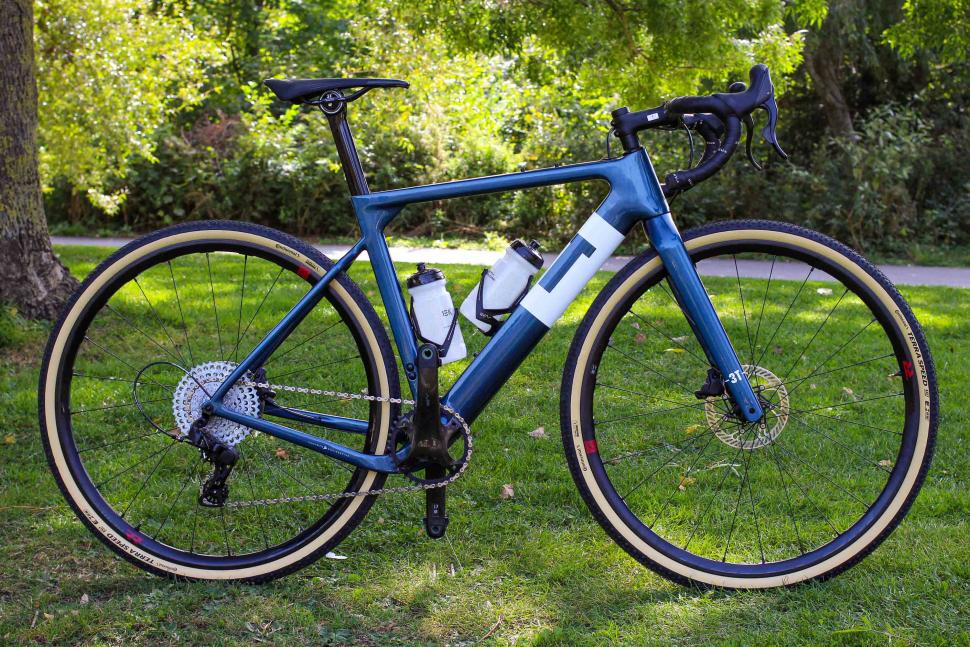
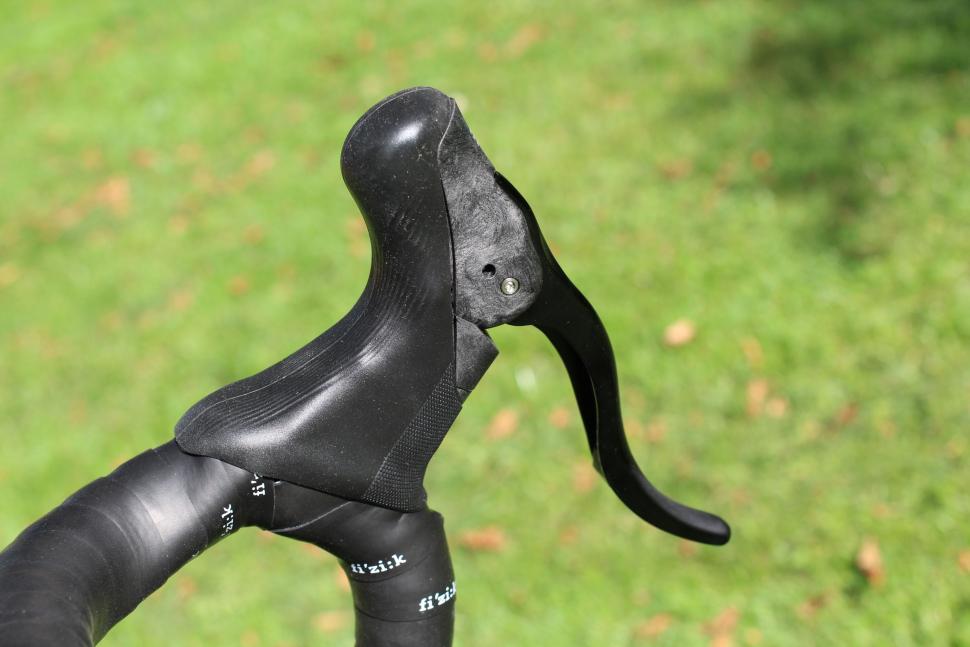
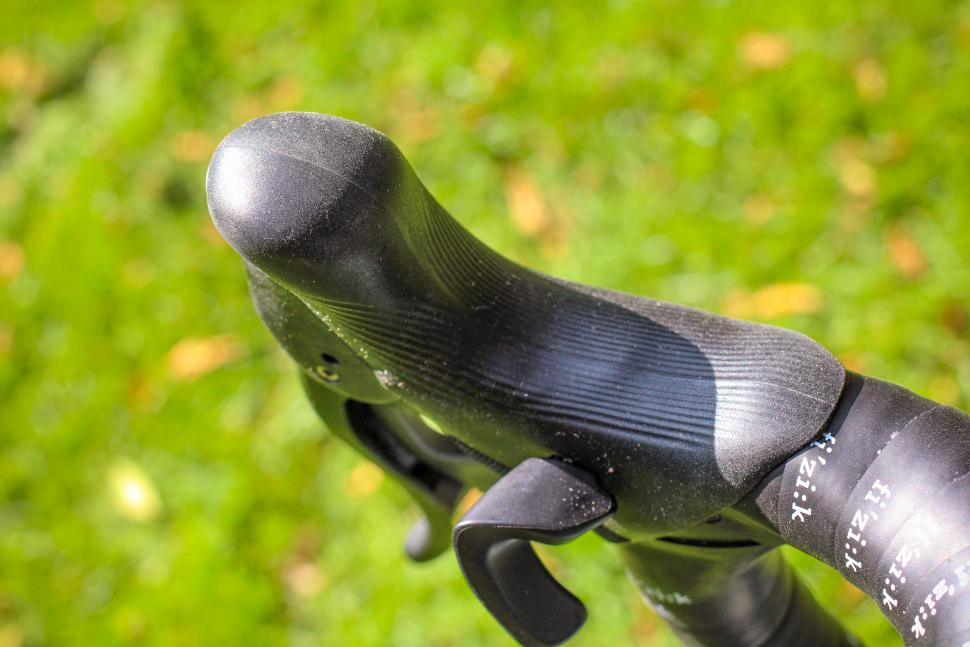
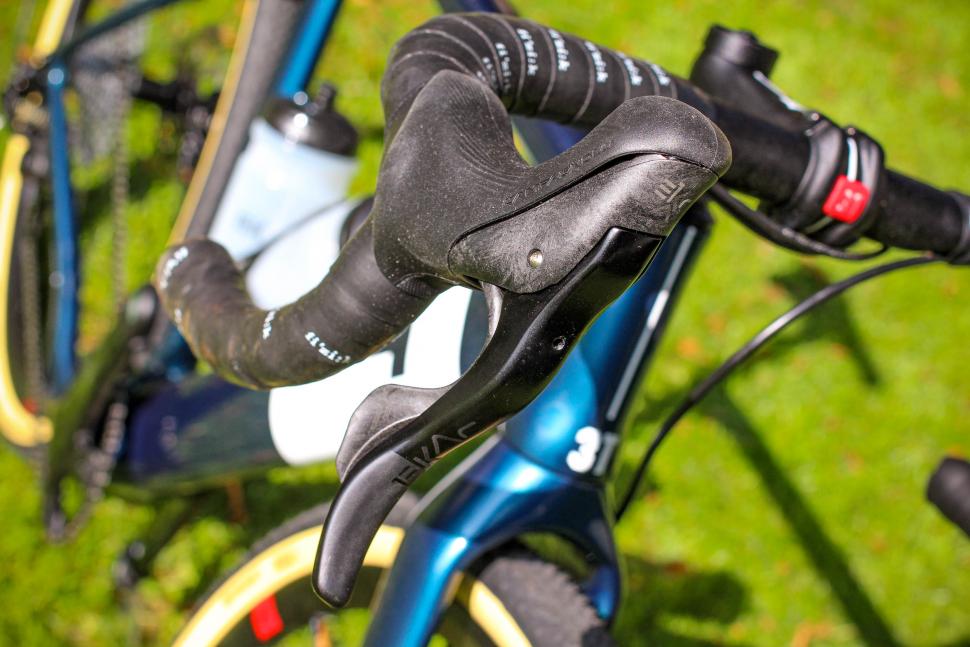
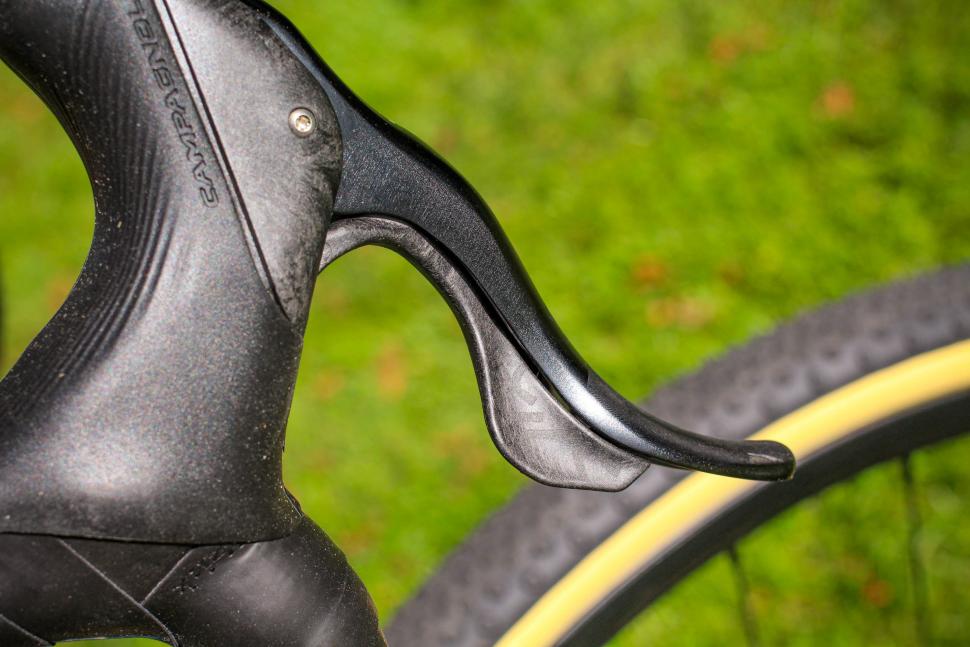



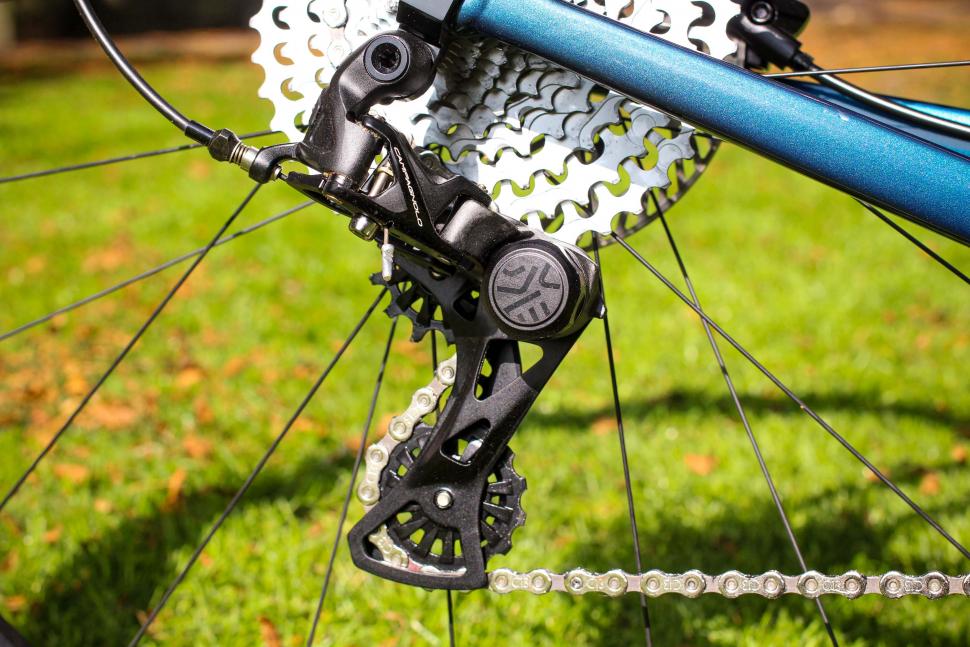

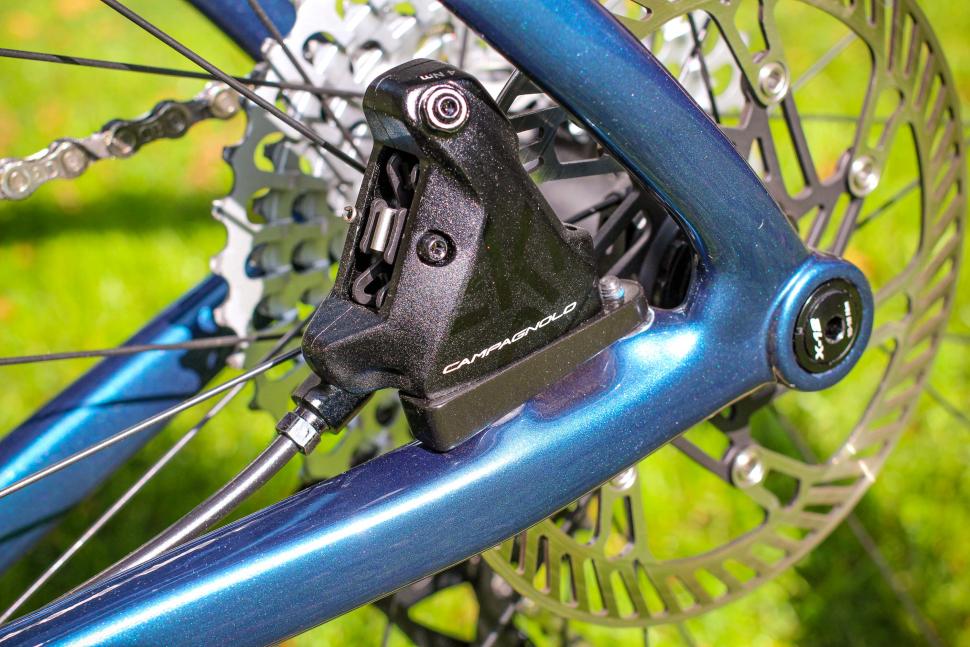



Add new comment
32 comments
Just had to check weights for something else - seems from table I have the difference disc/rim in current top 3 non-Di2 Shimano groupsets is between about 25-100g. The mammoths are getting smaller it seems, tough to stay warm with all that extra surface area ratio..
Pages